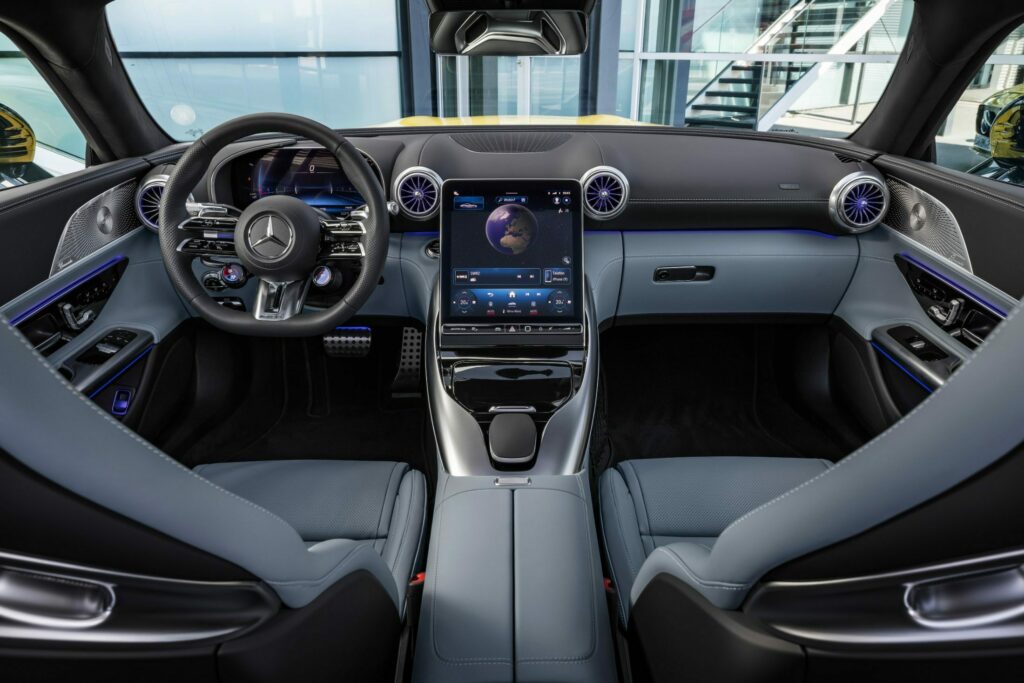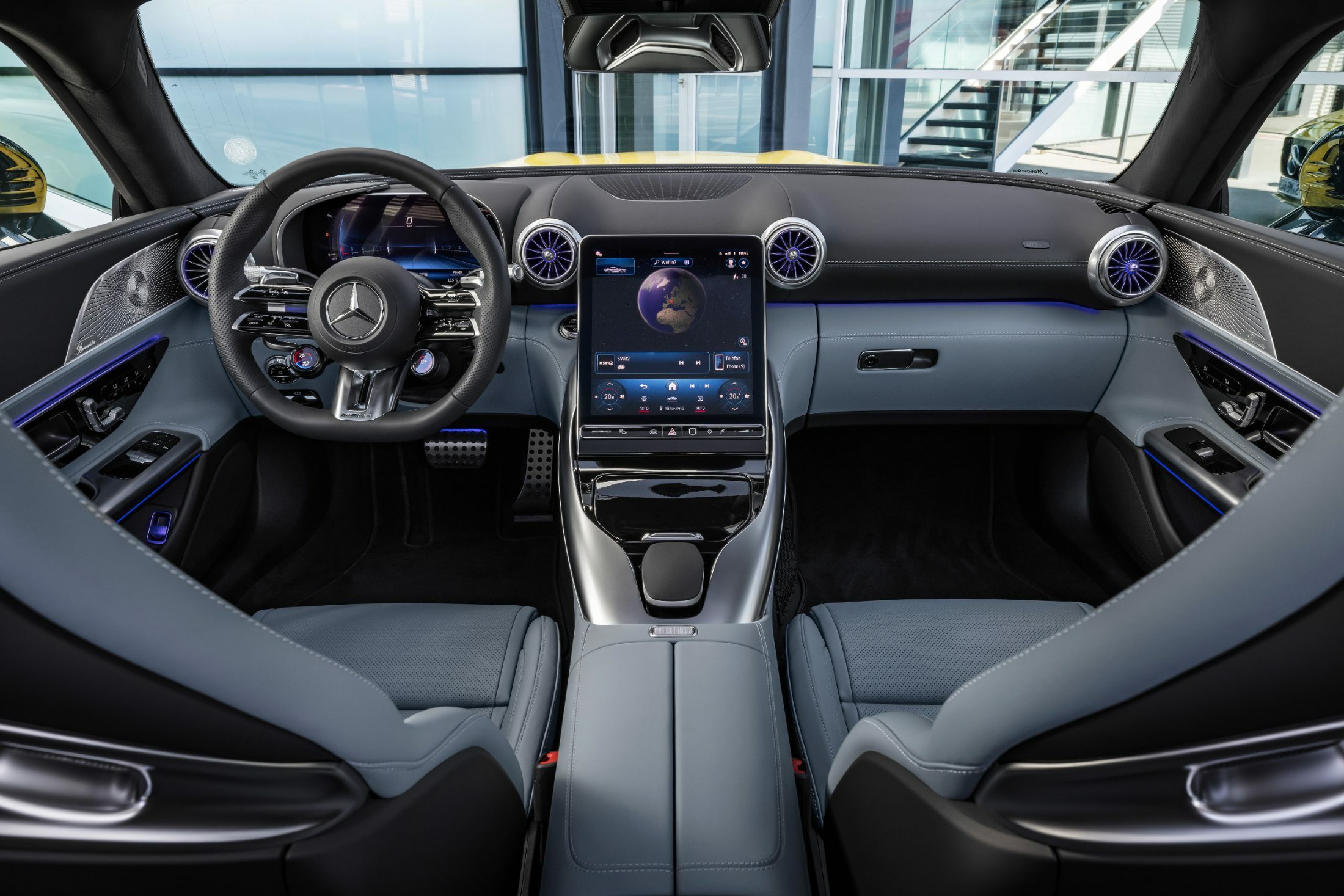Mercedes-AMG launched a new entry-level version of the GT sportscar which trades the V8 for a four-cylinder engine producing 415 hp (310 kW / 421 PS) with the help of an electric turbocharger. The Mercedes-AMG GT 43 loses the all-wheel-drive system being exclusively available in rear-wheel-drive form. It also features a redesigned bodykit distinguishing it from the more potent versions.
The first four-cylinder AMG GT in history is described as a car for purists. Despite lacking in the power department, Mercedes describes it as an “agile cornering artist with extremely dynamic handling and a lot of driving fun”, thanks to the lighter engine and the rear-wheel-drive setup.
More: Mercedes-AMG GT Concept E Performance Previews PHEV Sportscar With Over 800 HP

Under the long hood lies a smaller 2.0-liter four-cylinder powertrain paired with AMG’s F1-inspired electric exhaust gas turbocharger and a 48V mild-hybrid system with a belt-driven generator. The engine is exclusively mated to a nine-speed multi-clutch gearbox, sending power to the rear wheels.
The mill produces 416 hp (310 kW / 421 PS) and 500 Nm (369 lb-ft) of torque, while the electric motor adds up to 13 hp (10 kW / 14 hp) of extra boost. This means that the AMG GT 43 has an extra 40 hp (30 kW / 41 PS) than the mechanically related SL 43 roadster, but is 53 hp (40 kW / 54 PS) weaker than the V8-powered GT 53.
According to Mercedes, the entry-level AMG GT accelerates from 0-100 km/h (0-62 mph) in 4.6 seconds and has a top speed of 280 km/h (174 mph). Notably, the acceleration figure is 0.7 seconds slower than the equally powerful but all-wheel-drive Mercedes-AMG A 45 S 4Matic hot hatchback, although most owners won’t really care about the comparison.
Cleaner Looks For The Least Powerful AMG GT

Mercedes doesn’t want people to mix up the GT 43 with the V8-powered GT 53 and 63 trims, which is why it gave it a distinct appearance. The redesigned front bumper loses the grille extension and features larger, interconnected intakes. The front and rear fenders are narrower, combined with smaller side gills. The rear bumper sports a cleaner design without the vertical outlets, and quad round tailpipes (instead of trapezoidal).
For those who want to spice up the exterior design, AMG offers different options for the wheels measuring up to 21 inches (the stock model rides on 19-inch wheels), a fixed rear wing, and various packages adding high-gloss chrome or black accents.
Inside, the AMG GT 43 features the usual 12.3-inch digital instrument and 11.9-inch touchscreen for the MBUX infotainment. The standard AMG sports seats are upholstered in Nappa leather, but owners can also get the optional AMG Performance seats. Of course, more options are available through the Manufaktur personalization program.
More: 2024 Mercedes-AMG GT Debuts With More Practicality, Speed, And Sexiness

In terms of chassis setup, the GT 43 has narrower tracks compared to the GT 53 and 63 models. It comes standard with composite brakes and steel spring suspension featuring five-link front and rear axles, aluminum shocks, and lightweight coil springs. The more sophisticated AMG Ride Control Chassis is optional, as with the rear-wheel steering. Furthermore, the AMG Dynamic Plus package adds dynamic engine mounts, an electronically-controlled rear locking differential, an extra “Race” driving mode, active aerodynamics for the underbody, and yellow brake calipers as in the pictured example.
Mercedes-AMG is expected to bring the GT 43 in North America for the 2025 MY. The four-cylinder model is expected to be cheaper compared to its V8-powered siblings which start from $134,900. Note that the lineup of the AMG GT will soon grow further with the addition of the flagship E Performance version featuring a plug-in hybrid V8 with a combined output of over 800 hp.
































